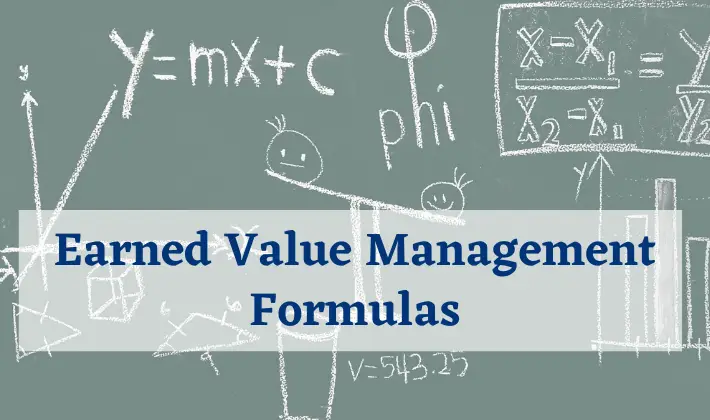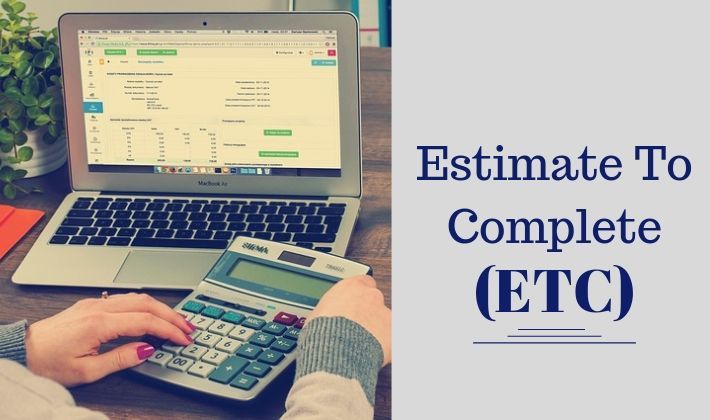Quick Reference for Earned Value Management Formulas
If you are looking for a comprehensive list of all the Earned Value Management Formulas, then you are at the right place. If you are preparing for PMP® Exam, you will find all the Earned Value Formulas. This article would provide you with a step up in doing Earned Value Calculations.
I have written a series of articles on Earned Value Management (EVM) where I have explained the Concept in detail including all the Earned Value Formulas. This post is written with a completely different perspective from my previous articles. It consolidates all my previous articles and gives an overview of all the Earned Value Management Formulas. In this post, I have covered some new Earned Value Formulas as well.
You can bookmark this article as a ready reference for all the Earned Value Management Formulas. It will help you in doing Earned Value Calculations.
If you are looking for more than an overview of Earned Value Management Formulas, then you should read my previous articles. A detailed exposition of Earned Value Formulas will help you in doing Earned Value Calculations correctly.
What is EVM?
EVM is a Project Monitoring and Controlling (M&C) methodology. Just like many other M&C methodologies, EVM measures & reports project’s progress in terms of Schedule and Cost. And also, like many other M&C methodologies, EVM has 3 different types of values & measurements:
- Project Plan
- Project Status
- Project Forecast
However, EVM is conceptually different from other M&C methodologies. In EVM Schedule & Cost measurements are combined together and they are reported as Monetary Values. The Monetary Values are reported either in monetary units (currency) or as an equivalent of monetary units like Effort. Let us take a close look at these values along with the Formulas behind them.
Planned Values
| Budget At Completion (BAC) | Planned Value (PV) | |
|---|---|---|
| Definition | It is the Estimated or Planned Cost required to complete the Project. But sometimes it could also mean Estimated or Planned Cost required to complete a Milestone(s). | It is the Monetary Value of the Work that was Estimated or Planned to be Completed by the Control Date. |
| EVM Formulas | No Formula | No Formula. It is sometimes expressed as a percentage of BAC. |
| Reference | Basics of EVA | Basics of EVA |
Project Status – Basic Values
| Earned Value (EV) | Actual Cost (AC) | |
|---|---|---|
| Definition | It is the Monetary Value of the Work that was Actually Completed by the Control Date. | It is the Actual Cost of Work Performed by the Control Date. |
| EVM Formulas | No Formula. It is sometimes expressed as a percentage of BAC and sometimes as a percentage of PV. | No Formula |
| Reference | Basics of EVA | Basics of EVA |
Project Status – Derived Values
Variance Values
| Schedule Variance (SV) | Cost Variance (CV) | |
|---|---|---|
| EVM Formulas | SV = EV – PV | CV = EV – AC |
| Reference | Basics of EVA | Basics of EVA |
| Note | Negative Variance means Project is Behind Schedule. | Negative Variance means Project is Over Budget. |
Efficiency Values
| Schedule Performance Index (SPI) |
Cost Performance Index (CPI) | |
|---|---|---|
| EVM Formulas | SPI = EV / PV | CPI = EV / AC |
| Reference | Basics of EVA | Basics of EVA |
| Note | SPI < 1 means Project is Behind Schedule. | CPI < 1 means Project is Over Budget. |
Note: EV always comes first in all the Variance and Efficiency Formulas.
Project Forecast
Budgetary Forecast
| Estimate To Complete (ETC) | Estimate At Completion (EAC) | |
|---|---|---|
| Definition | It is the Estimated Cost of the Remaining Work on the Control Date. | It is the Revised Estimated Budget for the Project on the Control Date. |
| EVM Formulas | ETC = (BAC – EV) / CPI ETC = (BAC – EV) ETC = (BAC – EV) / CPIp |
EAC = AC + ETC EAC = AC + (BAC – EV) EAC = AC + (BAC – EV) / CPI EAC = BAC / CPI EAC = AC + [(BAC – EV) / (CPI * SPI)] |
| Reference | What is Estimate To Complete in EVM? | EAC Formula |
| Generic Equation | ETC = (BAC – EV) / CPIp | EAC = AC + ETC |
Variance Values
| Variance At Completion (VAC) | |
|---|---|
| EVM Formulas | VAC = BAC – EAC |
| Reference | EVMS Explained in Easy Language |
| Note | Negative Variance means Actual Cost of Project is likely to be more than the Planned Cost |
Efficiency Forecast
| To Complete Performance Index (TCPIB) | To Complete Performance Index (TCPIE) | |
|---|---|---|
| Definition | It is the Projected Future Cost Efficiency to complete the project within Original Budget. | It is the Projected Future Cost Efficiency to complete the project within Revised Budget. |
| EVM Formulas | TCPI = (BAC – EV) / (BAC – AC) | TCPI = (BAC – EV) / (EAC – AC) |
| Reference | To Complete Performance Index | To Complete Performance Index |
| Generic Equation | TCPI = (BAC – EV) / (funds remaining) |
Is this the complete list of Earned Value Formulas to do Earned Value Calculations?
Yes. This is a complete list for PMP® Exam study. You would be able to do all the possible Earned Value Calculations using these Formulas. Otherwise, EVM is a big topic and there are many more Earned Value Management Formulas that are not explained here.
You can refer to Max Wideman Glossary to read some standard definitions on EVMS.
PMP Exam Formulas
I have also compiled a PMP Formulas Cheat Sheet. It contains 45 formulas and 57 abbrviations. It will help you in your exam prep. It is the best and most comprehensive cheat sheet based on the PMBOK Guide 6th edition. You can download it free of cost for your studies.
If you are looking beyond a cheat sheet, then I would suggest you to buy detailed PMP Exam Formula Study Guide by Cornelius Fichtner. It contains detailed explanations of all the formulas along with examples and 105 practice questions.
Disclosure: This article contains affiliate links - it means that, if you buy from any of these links, then I will receive a small commission that would help me in maintaining this blog for free. However, for you, there is no extra cost. I recommend only those products that I believe will definitely help the certification aspirants.


![How To Use Project Schedule Network Diagram? [Example]](https://www.pmbypm.com/wp-content/uploads/2014/06/project-network-1.png)
![Which Type of Contract Is Most Risky In Procurement [PMP]](https://www.pmbypm.com/wp-content/uploads/2012/02/Type-of-Contract.png)





Very simple and explicit formulas.
Hello,
Nice breakdown of the EV concepts and formulae. It would be nice to also have the ETCs / EACs defined according to project status:
– If the estimates are wrong or there is significant variance from the planned estimates then:
EAC = AC + Bottom-up ETC.
– If the estimates are correct then EAC = (BAC/CPI)
Thanks Francis. You can look at my other artciles that are mentioned in this post.